First Contact Resolution (FCR) is a metric often demanded by contact centre management. If nothing else, it demonstrates efficiency. It is brilliant, but to view it in isolation is, frankly, ludicrous.
The trouble with FCR has always been how to measure it. Contact centres certainly struggle to measure it, particularly if a customer gets in touch multiple times. If this contact is for different reasons, how can you measure the correlation between the two? The truth is that the majority of organisations don’t have the information available to adequately track this.
If the contact centre is only set up to track basic details like phone numbers and a customer calls you back within a short period of time, it doesn’t matter if their reason for calling was something entirely unrelated, it will count against your FCR levels. And it is doing a disservice to those working in the contact centre.
Don’t Be Lazy in Measuring Customer Effort
Contact centres are driven not just by efficiency, how many calls the agent takes or their handling time, but by customer satisfaction and Net Promoter Score (NPS).
This scenario leads to shameless pandering to customers to try and keep them happy on a scale of 1-10, but the measurement behind it is transactional, which customers weaponise and use as a stick to beat organisations.
It doesn’t have a place in the modern world. Rather than pressing ‘1’ to show how dissatisfied they are, the modern customer simply goes on to social media and writes a negative post, which provides greater damage than a lower NPS score.
How an alarming number of contact centres measure customer happiness is therefore out of date and is breeding the wrong type of behaviour. Focussing on FCR treats the symptom rather than the cause of customer satisfaction, or more accurately, dissatisfaction, which is where the focus should be.
If you give the contact centre a metric, they will try their hardest to meet it, even if that metric is nonsense. What the customer wants, simplistic as it may sound, is contact.
They don’t want to be pushed down a channel that is never monitored, knowing they will never get a response. They want their query answered on the best possible channel. In turn this makes things far easier for a contact centre to manage, particularly if their processes are on point.
For example, keep voice free for the top 20% of customers, the vulnerable and the VIP transactions, keep 60% in digital channels (the quick stuff) and 20% for long-term complaints.
Getting the channel strategy right and, ensuring everything is in order allows the contact centre to start tracking those that you can solve in first contact. This might only be 40% of your entire volume – but then you can have 100% FCR for that group.
What this does is change the measurement to making it relevant to the channel and the type of contact. For the same reason that FCR is a useless metric on its own, businesses struggle to do that because they don’t have the data, the information, the tagging and reporting to achieve it.
The focus can therefore shift to those dissatisfied customers by ensuring they have the right form of contact, even if it is bad news. British Airways took something of a battering last year for the way it communicated the news that it would only be offering vouchers, as opposed to refunds, for flights affected by the Covid-19 pandemic.
If a customer had to try six times to get this information, they would be livid. If their query was resolved first time, they would hardly be happy, but could begin to move on.
NPS as a customer satisfaction score ironically takes no effort. What it has done is it has allowed people to ride a wave of contentment based on high scores, which is actually pretty lazy.
If you ask businesses to look at the underlying causes of dissatisfaction and measure that, it takes a great deal of effort. But shining a light on internal processes that are blocking the ability to service your customers will be far more beneficial in the long run.
Managing the Dissatisfied Customer
There will always be a core of people who aren’t happy, known as complaint short (COMPS). This group is as inevitable as taxes. They will never be happy. Where brands need to focus is on complaint long (COMPL), the people who are genuinely dissatisfied because there has been a breakdown in service. In order to work on that you need to get first contact right.
The more advanced contact centres out there use Active Call Resolution, which measures the length of time you spend on a call, when and, importantly, why you then call back.
This creates a situation where agents are happier to spend longer on the phone to get the call resolved. This is a good thing for the customer, who has to use less effort to get their query resolved. But it certainly goes against the efficiency mantra.
So, contact centre operators need to look at their processes and their ability to collect and use data. The trouble is that generally the person who manages the contact centre tends to be a generation above, which can breed different behaviour.
Effort leads to satisfaction. Effort drives happiness and repeat business. COMPS are just miserable, COMPL is the organisation’s true churn.
Understanding this group helps to fix broken process, keep customers happy and grow the business. This makes the business case so much more powerful. But it requires agents with far more knowledge at their fingertips than they are currently afforded.




